Seeking for perfect bonsai pot?
How about making a beautiful and well-fitted bonsai pot for your healthy bonsai plant on your own?
Here I am going to give you a detailed, step-by-step, and comprehensive approach to selecting a bonsai pot for beginners.
In the next 5 minutes, I’ll explain to you the general rules of bonsai pot, their shapes, styles and which color and material would be perfect for your bonsai pot, and many more.
Hope you will learn all about bonsai pots from here.
General Guidelines on How to Select Bonsai Pot
Growing Bonsai is a long-time practice and challenging too. One of the challenges you will face is selecting the right bonsai pot for your plant.
Some experienced growers go with their gut feelings while selecting bonsai pots.
But what about Beginners?
We understand that it might be difficult for beginners to select the right pot. That’s why we are here to help to guide you to the right bonsai pot.
Just stick to the basic rule and bonsai pot guide and soon you will be mastering the art of bonsai pot.
Experienced bonsai growers divide the bonsai pots into two segments – masculine and feminine.
Let’s dig down deeper to find out which one suits you the best.
Bonsai pots are specially designed containers that provide the right environment for bonsai trees to thrive. They come in different sizes, shapes, and materials, but typically have a shallow depth and drainage holes. Bonsai pots also play a significant role in enhancing the aesthetic appeal of a bonsai tree, adding to its beauty and charm.
Masculine or Feminine
Often bonsai tree pots are thought to complement the masculine or feminine features of the tree they hold, but what exactly does that mean?
It simply means a tree is a mix of both but one sex is dominant. And this is the crucial rule in selecting a bonsai pot.
So, decide if your tree is masculine or feminine.
Below mentioned attributes will help you identify masculine and feminine traits, choose your pot accordingly.
Masculine Pot features
| Angular | Square, rectangular, hexagonal |
| Minimal | No embellishment or glaze, plain feet, earth tones or dark colors |
| Severe | Straight lines, angular edges, “heavy” appearance or material |
Feminine Pot Features
| Ornamental | Oval, round, ellipses, curved edges |
| Curved | Decorative designs, glazes, tapered lips and feet |
| Soft | Cream colors, pastels, cheerful tones |
Some other characteristics of masculine trees are Strength, old bark, deadwood, thick trunk, and dense branches. Whereas feminine characteristics are grace, smooth bark, and sparse branches.
Tips:
- Masculine bonsais should be planted in pots that have clean, distinct lines.
- The best container for feminine bonsais is one with subtle feet and low height.
- In the case of an androgynous (having both masculine and feminine attributes) bonsai, you should choose a round pot.
Design
It is best to match the design of the bonsai pots to the degree of masculinity or femininity of your tree.
Decide whether design should be concave, convex, angular, round, oval, or rectangular.
Next, adjust the degree of femininity or masculinity by choosing rhyme, feet, glaze, and decor.
As you learn more about the bonsai pot guide, the better the experience of your final Bonsai will be.
Size and style
Talking about size and style, there are two basic guides in choosing bonsai pot size and style,
- Is your pot big enough to accommodate a tree and its root structure in your climate suitable?
- And how does it look with your style of the tree?
Size consideration
A bonsai pot should be big enough to allow the root system of your bonsai plant to stretch its legs a little. Also, the vital end of the root should have enough space to draw nutrients and moisture from the soil.
In repotting, if you want the bonsai plant in a slightly bigger pot or want to keep it in the same size pot, it will depend on several factors such as the age of the tree, type of tree, bounding of roots, and most importantly whether you would like your bonsai tree to be bigger or stay in the same size.
Besides, repotting does not always mean you have to increase the size of your pot. If you do regular root pruning while repotting, a bigger pot is not necessary your bonsai tree can live happily in the same size pot.
General Thumb Rule: The bigger the pot, the larger your bonsai tree can grow. But in certain situations, like the extreme heat and low humidity, consider a pot that is slightly bigger.
Style Consideration
The style of the pot is important as pot size. Because a bonsai pot represents the natural tree in a majestic form.
Low-profile pots look great with most upright trees. When you put a miniature tree off-center in a large pot, you will have room for other features in your miniature landscape setting.
One of the bonsai styles consists of planting multiple trees, also known as forest planting.
| Shape of the bonsai | Shape of the pot |
| Formal upright | Shallow or medium depth rectangular Shallow or medium depth oval |
| Informal upright | Shallow irregular oval. |
| Cascade | Deep, hexagonal, octagonal or square. |
| Semi-cascade | Round, square, octagonal, hexagonal, semi-deep. |
| Windswept | Rock slab, shallow. Shallow, rectangular or oval. |
| Twin-trunk | Shallow round. Shallow free form. |
| Multiple trunks | Shallow rectangular or oval. |
The traditional guide on Bonsai pot size and style
- Ideally, the length of the pot should be about two-thirds the height of the tree.
- If the height of the bonsai tree is shorter than its width, the length of the pot should be about two-thirds the width.
- On both sides, the width of the pot should be a bit smaller than the spread of the longest branches.
- The shape of the pot should match the style of the tree. Straight trunk style looks better in a rectangular pot while curved or soft-lined trunk trees look better in an oval, round, round-cornered, or rectangular pot.
- Trees that look tough and powerful should be planted in pots that look the same. For example, a pot with hard angles.
Types of the bonsai pot material and color and shape
Bonsai Pot Material
Usually, many types of containers can be beautiful and effective bonsai pots, as long as they are meeting bonsai plant requirements.
A good bonsai pot consists of, good drainage holes and wiring holes so that your bonsai tree can be fitted into that pot.
Drainage holes: As bonsai tree grows in a constrained environment, a good drainage system is an essential part of preventing root rooting.
Usually, bonsai pot has at least one drainage hole but for the healthy growth of the bonsai plant, we recommend you to choose the pot with two to four holes. You can drill more yourself for proper soil aeration.
Wiring holes: Weaving wire through the holes and drainage mesh will help to affix the roots of your bonsai tree to stand upright in the soil.
Bonsai pot can be made out of,
- Plastic
- Ceramic or Porcelain
- Concrete
- Clay
- Metals
- Wood
- Stoneware
- Mica
The material you choose for your pot will depend on your budget and the quality you want to achieve.
For example, mass-produced plastic containers are practical and cheap, but they could release toxins if exposed to high temperatures.
Additionally, plastic tends to lose its shape over time, and it retains more water than other materials, so you can run a higher risk of root rot and overwater.
The best type of bonsai pot is one that is made up of porcelain or ceramic. These pots absorb and hold no water in their material, an important feature for the health of bonsai trees.
Then there are handcrafted ceramics and porcelain pots that are crafted with great care and will make your bonsai stand out from the crowd. Since these types of pots are carefully crafted and custom made, they will withstand the test of time and different weather conditions better.
Although, they can naturally cost more than mass-produced goods.
However, metals can also release toxins so it is better to go with other options. You can follow our guidelines on making bonsai pot, but if you don’t have time to make it on your own, consider buying it online or at a local nursery.
Bonsai Pot Color
Glazed Bonsai Pot
Unglazed Bonsai Pot
In Bonsai pot, the color of the pot is the final element to the harmonic equation that you should seek in a pot.
If you are looking to compliment your bonsai attributes, you should go with grey-ish or brown-ish colors if your bonsai tree does not have fruits and flowers on it. For example, Juniper or the pine tree.
On other hand, if your bonsai tree produces fruits and flowers, then glazed colors could be a perfect match. Colors such as light green to blue tones represent a great add-on to the bonsai tree’s aura and appearance.
The following table is for quick reference:
| Color of the tree | Color of the pot |
| Red | dark blue, green, and off-white |
| White | matte red, dark or light blue, white, very dark colors. |
| Yellow | Dark green, dark without glaze, blue. |
| Blue | Red, yellow, white, and grey. |
| Pink | White, green, and blue |
| Bonsai with variegated leaves | Deep green and black |
| Orange | Deep brown and green |
| Leaves with softer edge | Grey |
| Evergreen | Matte white, brown, reddish, and black |
| Junipers | reddish or brown |
Bonsai Pot shape
Ideally, there are six main shapes of bonsai pot,
- Squared pots: If you like flat shapes then this shape would be an ideal choice.
- Round pots: If you want to make your bonsai tree look taller than it is, the round bonsai pot will make it look taller.
- Rectangular pots: These pots are recommended for bonsai that aren’t too curved.
- Oval and corner-rounded rectangular pots: They are completely opposite flat rectangular pots. A corner-rounded rectangular pot is a perfect match for curved trunks.
- Wide Shallow pots: This pot is suitable for multiple bonsai; it practically creates the sensation of a miniature forest or garden.
- Lotus-shaped pots: It is perfect for round and populated foliage.
Decorative Tips:
Here are some of the decorative features that are often noticed, but are helpful;
Pot Lip or Rim:
A lip on the upper edge offers more resilience to a masculine bonsai tree.
An upright edge is more soothing for more androgynous trees.
A bowl or convex rim is more appropriate for feminine bonsai trees.
Pot Corners:
Harsh, right-angled corners are masculine and suited for masculine trees.
Indented corners on a rectangular pot give a gentle effect to the masculinity of a pot.
Round corners soften the pot even further, starting to resemble an oval pot and more suited for masculine deciduous trees.
Feet of pot:
The primary reason to have feet on a bonsai pot is to provide good drainage and airflow, but feet can also be operated to adjust or modify the pot’s impression.
Feet can be subtle and embellishing or muscular and strong.
These qualities can be used to control the overall appearance of the pot, big clumpy feet can add resilience to the structure, and understated smooth feet will have a contrasting effect.
Tips on Choosing the Right Bonsai Pot Color and Material
Tip 1: Bonsai tree’s health always comes first! Always remember that a finished bonsai tree has undergone many years of training just to adapt to the art of miniaturization.
That’s why the practice of the art of bonsai tree is a lesson about patience, hard work, and perseverance and you need to apply the same while choosing the right bonsai pot.
Tip 2: While selecting the material for the bonsai pot, do not select it just because of its aesthetic appearance but also look after the required measurement and especially the depth of the bonsai pot.
Tip 3: Make sure your bonsai pot always compliments your bonsai tree’s attributes such as the flowers, texture of the bark, thickness of the trunk, leaf and needle sizes, and shape.
Tip 4: For fruiting and flowering bonsai tree glazed colors are the best. And for evergreen trees such as juniper and pine, brown or the muted tones of gray are highly recommended. Mostly, glazed bonsai pots have been designed such as flowers or birds.
Tip 5: Flowering or deciduous bonsai trees should be planted in glazed bonsai pots having soft hues, like cream, green, or light blue.
Unglazed bonsai pots in colors like brown, gray, and red clay are somber hues, is suitable for evergreen and conifer bonsai tree, portraying the harsh environment of the bonsai tree’s natural habitat.
Usually, an unglazed bonsai pot is used to emphasize the age of the bonsai tree or to express a quiet and relaxed atmosphere.
How to make Bonsai Pot?
Things you would need,
| Wood HammerNails | ClayPlastic ContainerKiln |
Step 1: Firstly, decide the size of the bonsai plant that you want to grow. You would be amazed to learn about different types of bonsai.
While bonsai is considered the art of miniaturization, it has much more. You can develop any size of bonsai plant.
While making the pot, the size of the bonsai pot should be appropriate to the amount of space that should be provided for the roots.
Another thing to keep in mind is to make the bonsai pot wide because the branches of the tree will be spreading out.
Step 2: You can use a kiln and clay to make a ceramic bonsai pot. You can get these tools and learn the skill of doing that.
Usually, people think a bonsai pot is a shallow ceramic pot with a single hole in the middle of the bottom.
In fact, they do not have just one single hole nor they all are ceramic.
What you choose to use on your bonsai pot depends upon why you are crafting it and other tools available to you.
Step 3: Now cut a few pieces of wood as per the decided length and width of your bonsai bot.
Simply, you can use wood, a hammer, and nails to assemble your shallow bonsai pot. This can make an attractive pot.
Next, line the interior of the shallow wood box with plastic. Also, poke small holes in the bottom of the bonsai pot.
Also, you can put a shallow plastic bowl inside your wood box, just make sure it is not as tall as the wood. So that it is not visible.
(Remind yourself to poke holes in the plastic bowl while choosing this option)
Step 4: It’s time to decorate the bonsai pot. You can use a leftover plastic bowl for this purpose or you can get a good bowl, clean it nicely and let it dry. After that coat the bowl with crafter glue.
You can apply any sort of surface to make the pot attractive in appearance. Also, try to coat it with different gels, paints, sands, and other decorative items.
Special note: Be creative while making your bonsai pot. Because it is going to last for many years. Add your creativity and efforts to that level where you feel good about yourself and admire your art of making the bonsai pot. Try to apply every bonsai pot guide and general rule to your bonsai pot.
Case Studies of Bonsai Pot
1. Deviating from the two-third rule
As said, “Size equals health.” According to the basic guide of the bonsai pot, the pot should not be more than the two-thirds height of the tree. As you can see in the above image, the pot has deviated from its rule because its crown is big.
In this case, the tree is large not only because of aesthetics but also because its branches correspond to an equally large root system that requires space.
Therefore, the tree’s crown is so big, almost as wide as it is tall. Likewise, a yellow container has been chosen that picks up and intensifies the red leaves of autumn.
If followed the two-third bonsai pot rule, the bonsai plant would have looked like this.
2. Masculine vs Feminine
This is the perfect combination of pot and tree. It is showing masculine attributes such as sparse branches, the thick scarred bark, matched perfectly with pot and straight lines on stable feet.
The opening rim lip is symbolizing strength – the male outpouring force.
It might have been obvious to choose unglazed terracotta red, but instead, a red glaze has been chosen, which performs the same function.
Instead, this pot would be a perfect fit, as the curved sides pick up the curved trunk and give the attributes of more feminine charisma.
Hence, the example clearly shows that there is a more feminine attribute in the tree than what we noticed first.
3. Forest Planting
This is well known legendary composition called “Protector of the spirit.” It represents the creators of grandchildren with a long history.
The oval shape is the accepted practice for forest planting. Here the mahogany red waxed surface is tending to remind of antique furniture and gives the tree grace and history.
The pot itself is a valuable vessel that is enhancing the age of the tree and its royalty.
There might be no option other than an oval pot for this composition. But unglazed red or glazed with earth colors would have been worked.
4. Seasonal color
For the deciduous trees, whose color changes with the season, a pot to suit all stages with their colors would be perfect. It is easiest to choose a color of the pot that reflects the bark, like the gray color shown in the image.
But you can also find a tone of the leaves that will suit. You can select colors like light brown or unglazed.
You can also select a contrasting color such as blue, a mottled glaze with both red, green, and yellow tones.
FAQ
1. Where to buy bonsai pot?
You can easily buy a bonsai pot online, at a local shop, or even at pottery conventions. A local nursery can be a great place to start, take a few pictures of your bonsai tree and share it with the nursery so that the staff can help you pick the perfect fit.
2. Why is bonsai pot expensive?
Bonsai pot is the art of understanding the needs of the bonsai plant and designing for the same. It requires mastery and some of them are centuries old for this reason some of them are rare and quite expensive.
But you can also choose the well-constructed and good-quality pot for your bonsai tree.
3. Do Bonsai trees need special pots?
Firstly, bonsai tree pots are designed to enhance the “bonsai effect.” when chosen intentionally, they work like an illusion added to your natural tree and sprouting from the tray. Also, the right pot highlights the elements of balance and harmony you have nurtured in your bonsai tree.
Secondly, they are also designed to meet specific demands of the bonsai tree such as being equipped with proper wiring, drainage holes, engineered for standard width and length requirements, and much shallower compared to other traditional planters. So, it can be said that bonsai pot serves a purpose in bonsai tree care.
4. Why do Bonsai have shallow pots?
Because shallow pot drains excess water very easily and helps to keep bonsai plant healthy. It also takes several repotting for a bonsai to slowly get adjusted to smaller pots.
5. When is it time to repot?
Some bonsai trees need repotting annually whereas some can go for several years. But consider repotting when the tree becomes root bound and has no place to go for nutrients and moisture.
6. How do you pot a bonsai as a beginner?
First, organize the pot by shielding the drainage holes at the bottom of the pot with mesh. The mesh or net is held in position with the help of a wire. We also connect an extra wire, which we will use later to keep the bonsai in place. Add a light layer of heavy draining substance first, like lava rock or akadama, which acts as a drainage layer. Then put a layer of your potting mix. Place the tree and pat the soil to remove air pockets and stabilize the tree. Then at the end secure the tree with wires and water it properly.
Conclusion
In our article, we hope you learned everything you need to know about choosing a bonsai pot. It might seem like a lot of bonsai pot guides and rules to follow. Not to worry, because it is possible to select the perfect fit for your bonsai tree by sticking to the basic bonsai pot guide and having a little bit of patience.
Of course, there are exceptions to rules and to some guides of bonsai pot, because bonsai is art and art does not precisely follow all the rules.
But when it comes to displaying your bonsai, do not overlook the pot in which it is placed. Bonsai pot plays an important role in creating the “bonsai effect.”
A perfect bonsai pot can be the final piece of the puzzle in the cycle of harmony. So, do follow the basic bonsai pot guidelines and get the right fit for your healthy bonsai.


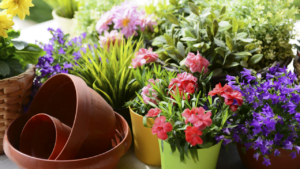
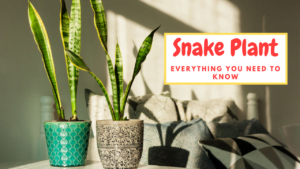
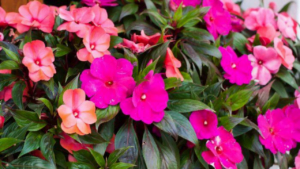
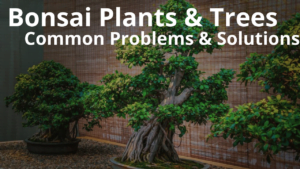

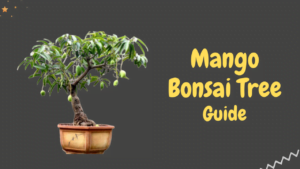
Thank you for the wonderful article on pots. (I’m new to Bonsai, less than 2 yrs).
I’d love to see 2 more comprehensive articles – companion plants and stands for shows.
Dan B – Tucson